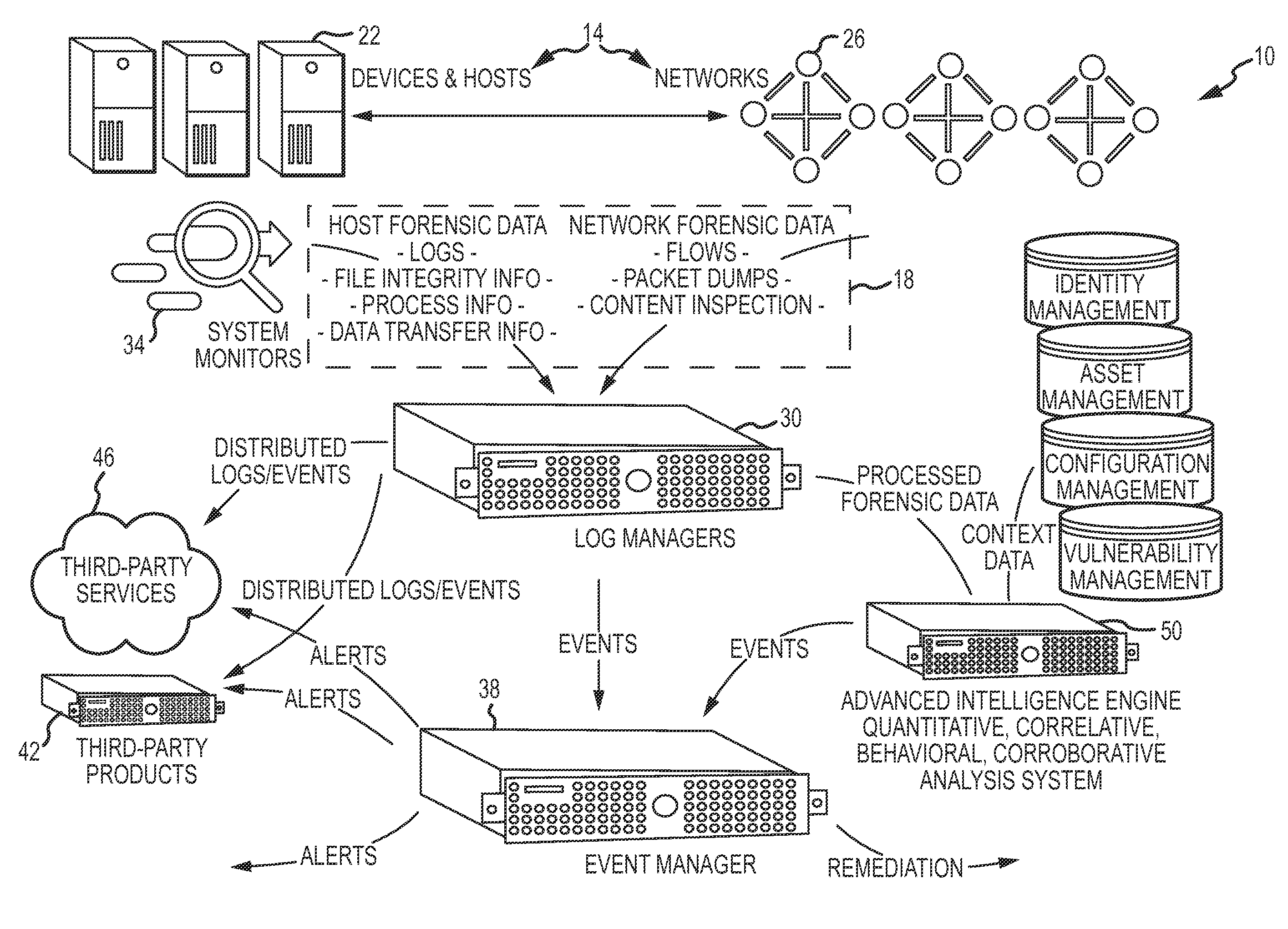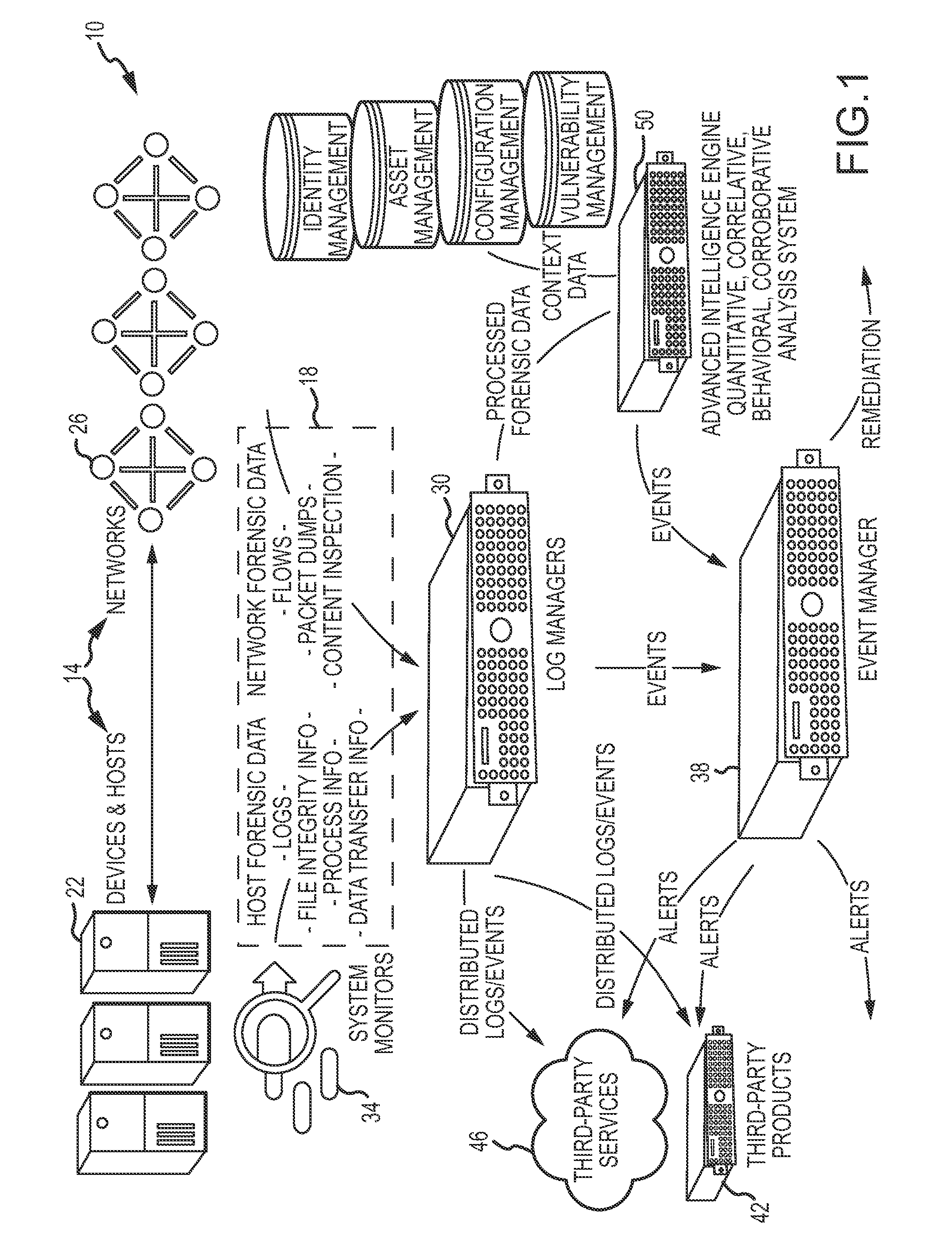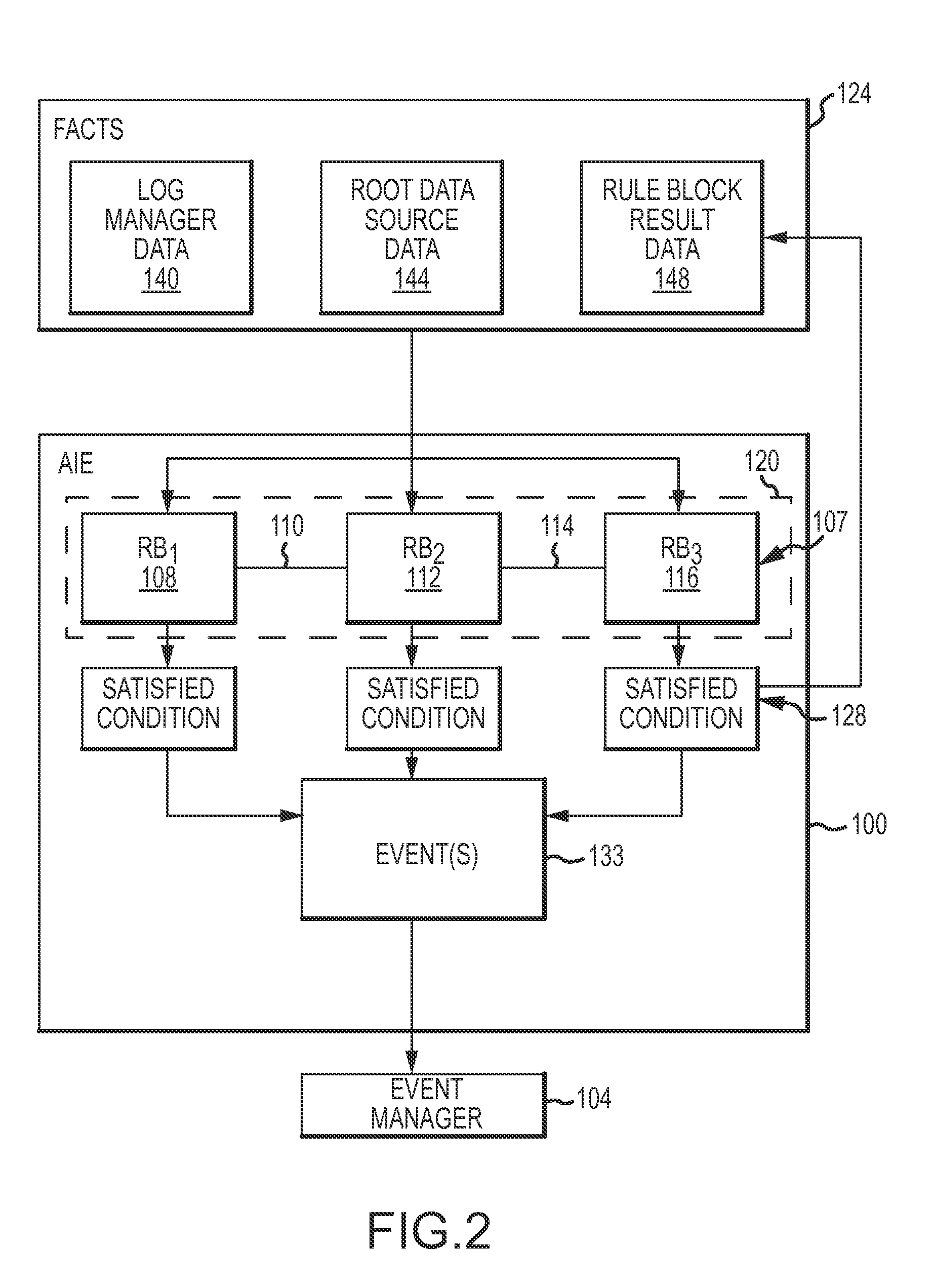Advanced Intelligence Engine
a technology of advanced intelligence and intelligence engine, applied in the field of network monitoring and information management, can solve the problems of limited traditional sem solutions, unauthorized logins and their prevention, and inability to achieve the desired prevention, and achieve the effect of improving the processing of textual messages
- Summary
- Abstract
- Description
- Claims
- Application Information
AI Technical Summary
Benefits of technology
Problems solved by technology
Method used
Image
Examples
Embodiment Construction
[0045]The present disclosure relates to computer network monitoring and information management through the processing of various types of structured or normalized data generated by or gleaned from devices, hosts or networks. The utilities disclosed herein are applicable to a broad variety of applications such as providing event detection for virtually any type of system that generates data (e.g., computer servers, mainframes, network devices, security devices, access control devices, etc.). While much of the present discussion will be in relation to log messages and other log-related data, it should be appreciated that the present utilities are applicable to numerous other types of structured or normalized data (e.g., forensic data, transactional data, activity data, and / or the like).
[0046]Turning to FIG. 1, a system 10 is provided that generally provides for the collection, processing, management, and analysis of various types of data generated by or gleaned from one or more device...
PUM
 Login to View More
Login to View More Abstract
Description
Claims
Application Information
 Login to View More
Login to View More - R&D
- Intellectual Property
- Life Sciences
- Materials
- Tech Scout
- Unparalleled Data Quality
- Higher Quality Content
- 60% Fewer Hallucinations
Browse by: Latest US Patents, China's latest patents, Technical Efficacy Thesaurus, Application Domain, Technology Topic, Popular Technical Reports.
© 2025 PatSnap. All rights reserved.Legal|Privacy policy|Modern Slavery Act Transparency Statement|Sitemap|About US| Contact US: help@patsnap.com



